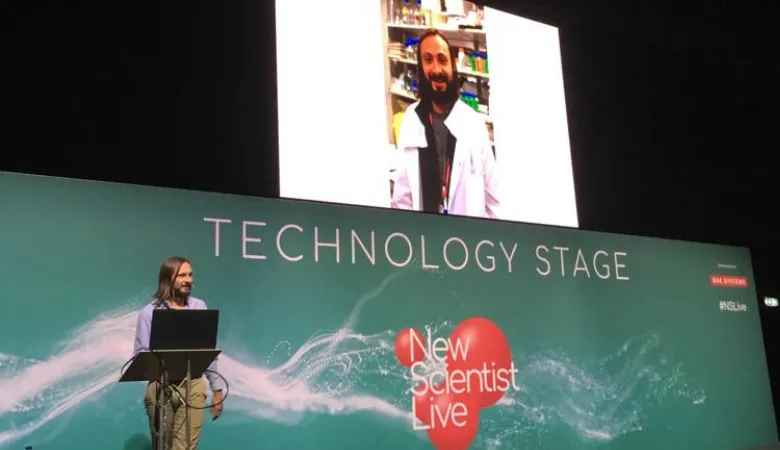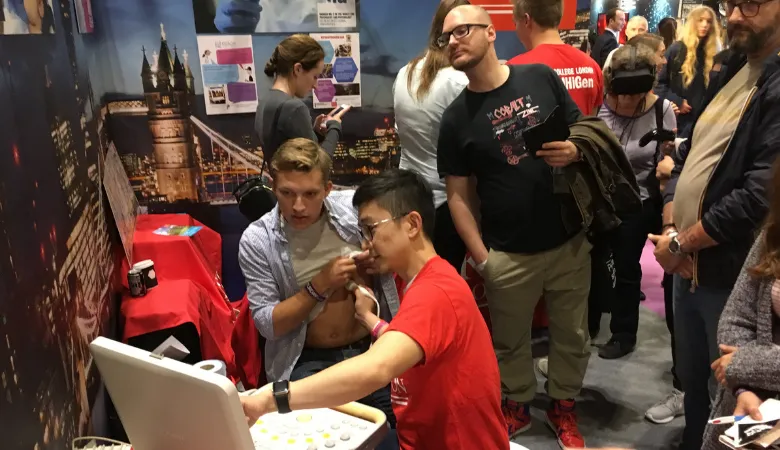It was a fabulous day with lots of fun science talks and exhibitions to get your teeth into. To be given the opportunity to tell me own story on such an impressive platform was a real privilege and a career highlight to date.
Daniel Brayson
24 October 2018
School academics at New Scientist Live 2018
On 22 September School Physiologist, Dr Daniel Brayson and Clinical Scientist, Haotian Gu participated in this year’s New Scientist Live which took place on 20-23 September at Excel, London.

New Scientist Live is an award-winning festival of ideas and discoveries for everyone curious about science and why it matters, with more than 120 speakers and 100 exhibitors.
In the Technology Zone, Daniel spoke on his experience during a 4000-km cycling race across Europe in the Transcontinental Race, and simultaneously collecting data to ascertain the effects of ultra-endurance cycling on human physiology. Daniel is based in the Cardiovascular Sciences Section of our School and his research focuses on the relationship between genetics, molecular biology and physiological function and how that goes wrong in heart disease, in the hope of one day helping to cure it.

In the Human Zone Haotian hosted a demonstration on ‘High blood pressure (hypertension): Heart or blood vessels, who’s to blame?’ where visitors got the opportunity to learn about the mechanism of high blood pressure as they watched and took a picture of their heart contracting using heart ultrasound (echocardiography). Haotian works in the Vascular Risk & Surgery Section as a Clinical Scientist with special research interest in using advanced ultrasound imaging of the heart (echocardiography) and non-invasive central blood pressure to look at ventricular vascular interactions in patients with hypertension and heart failure.
On the day, our stand attracted over 200 visits and people were really interested in our research and excited about how their heart could be visualised on the screen with a simple painless scan. Some were also interested in taking part in our studies. I would like to thank my colleagues Andrii and Henry for their involvement in such a wonderful event.
Haotian Gu
